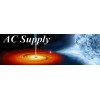Constructing a model rocket requires you to have dedication as you put it together piece by piece. But if you are unfamiliar with the proper terms for model rocket parts, it may slow you down. Knowing the most important model rocketry terminology makes it seem less foreign to new hobbyists.
Nose Cone
You can find the nose cone at the top of the rocket. The conical shape allows the air to flow around the rocket, improving its flighting capabilities and aerodynamics. There are six types of nose cones: conic, bi-conic, spherically blunted conic, parabolic, elliptical, and tangent ogive. Each one has pros and cons regarding ease of construction and flight capabilities, so it’s a matter of preference what you want to put on top of your rocket.
Body Tube
The body tube, also known as airframe tubing, is the central cylindrical body of a model rocket. Typically, body tubes use cardboard tubing to maintain the rocket’s light weight, allowing the rocket to soar high in the sky.
Many prominent model rocket manufacturers create body tubes within a common set of specifications so that you’re not mixing and matching parts that do not fit together. If you don’t have a rocket that’s cohesive in its parts, it will be an underwhelming flight.
Launch Lug
The launch lug’s primary function is to provide stability to the rocket before and during blastoff. It does this by keeping the rocket parallel to the launch rod within the first few seconds of being airborne. Launch lugs stay connected to rockets during flight, resulting in lower flight levels due to aerodynamic drag.
Rear Fins
The fins of a model rocket give the model rocket stability. You can’t imagine an airplane could fly without its wings. Therefore, a model rocket needs its fins to fly high. Generally, three to four sets of fins are attached to the rear of the body tube.
The fins are either balsa or plastic to maintain the rocket’s light weight. Balsa offers you more flexibility, permitting hobbyists to toy with which fin formation works best. On the other hand, plastic fins are easy to install because they are already in place.
Engine Mount
The engine mount is the home of the model rocket engine. There are three sections of an engine mount: the engine tube that contains the engine, the rings that allow the tube to remain in the center, and the engine hook that holds the engine in place.
Shock Cord
This part of the model rocket is what holds everything together once they separate at ejection. You’ll want the shock cord to be close to triple the length of the body tube for maximum efficiency.
Parachute and Wadding
As the rocket descends during its final stages, a parachute deploys. There are many model rocket recovery techniques, and parachutes are the most common. The purpose of wadding is to reduce rocket damage. It consists of fire-resistant paper that protects the motor from the parachute.
Learning important model rocket terminology helps when you are constructing a model rocket and need a specific part. AC Supply provides the best model rocket launch kits for hobbyists of all skill levels. Please browse our wide array of kits and find the perfect one for your next project!


